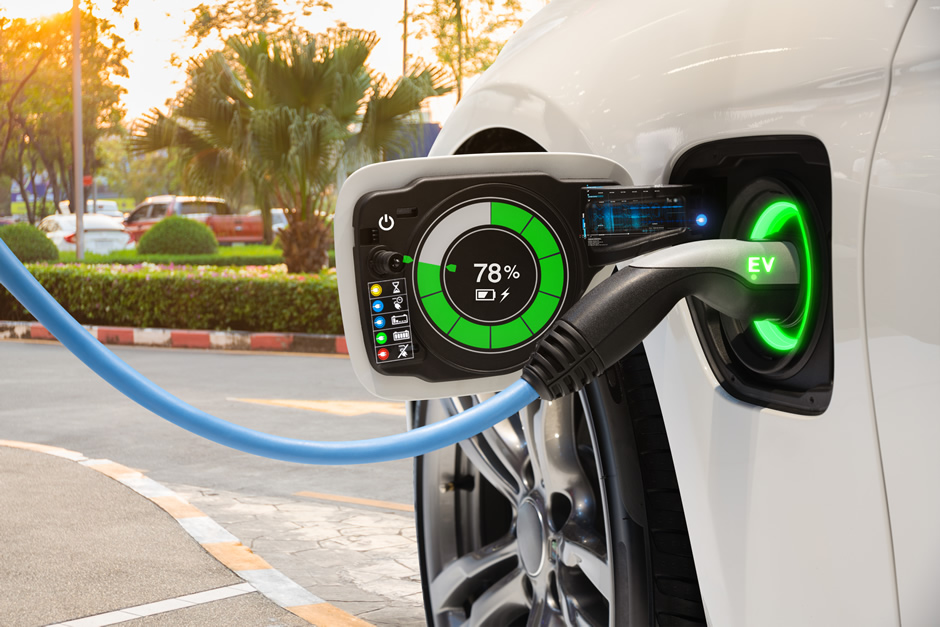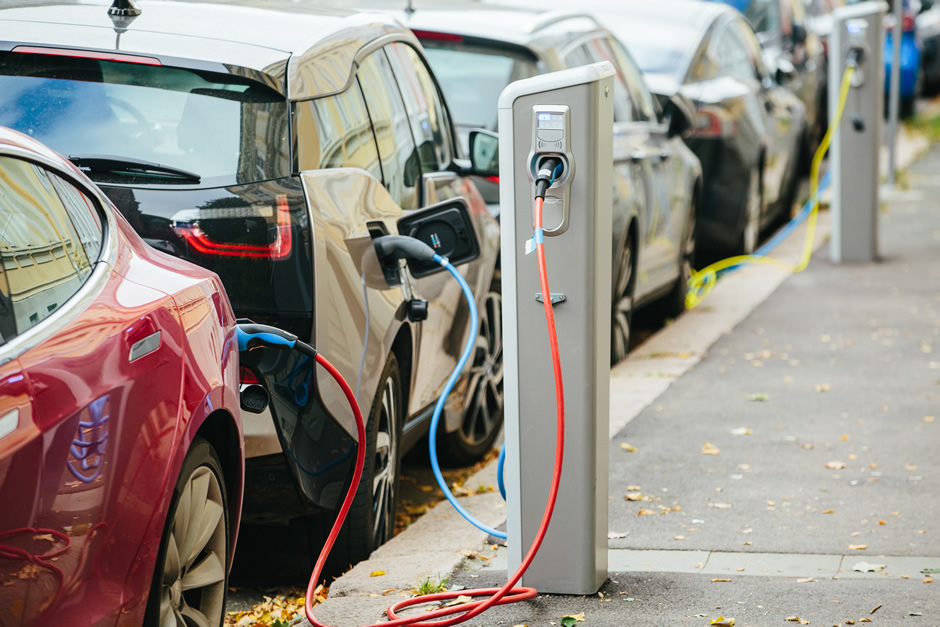Good Times Ahead Experts predict the province will be a crucial jurisdiction in the global production and development of electric vehicles
The automotive industry is undergoing its most significant evolution since the invention of the moving assembly line in 1913—the rapid growth of electric vehicles (EVs).
In 2020, EVs accounted for 2.5 million units sold, but that figure is predicted to reach 31.1 million by 2030. By 2040, EVs will make up more than half of all passenger vehicle sales.
This burgeoning industry makes for exciting times in Ontario, Canada. Experts predict the province will be a crucial jurisdiction in the global production and development of EVs. Ontario is poised to build the innovative technologies that will define the future state of automotive design in electric vehicles and beyond.
Here are the top five reasons why Ontario is a driving force in EV production.
- Access to an abundance of critical materials
- Ontario is a mining powerhouse. In 2019 alone, the province produced more than $10 billion worth of minerals—accounting for almost 25% of Canada’s total mineral production. At the top of the list of naturally occurring minerals in Ontario includes graphite, lithium, nickel and cobalt—all crucial raw materials in the production of batteries for EVs.
- We’re in a golden age for critical minerals. The World Bank predicts a 500% increase in production of the three minerals as electricity grids and vehicles across the world shift to sustainable energy. “The electric vehicle revolution is ushering in a golden age for battery raw materials, best reflected by a dramatic increase in price for two key battery commodities—lithium and cobalt,” according to a McKinsey report.
- Ontario’s north is a hotbed for mining cobalt, nickel and more. The aptly named Cobalt, Ontario is home to North America’s only permitted cobalt refinery. The city of Greater Sudbury, also part of Ontario’s north, boasts the world’s second-largest nickel sulphide deposit site.
- International investors are taking notice. Ontario’s abundance of natural resources, coupled with a reputation for scientific and manufacturing excellence, makes the province the perfect place for international investment—and the world is taking notice. The developments in Ontario’s EV space have prompted Australia’s BHP Group Ltd. to move its exploration headquarters for nickel and copper to Toronto. It’s a move that could catalyze greater international attention and investment.

- Home to automotive powerhouses
- Ontario is the only place in North America where five major automakers build vehicles: Stellantis (formerly Fiat-Chrysler), General Motors, Ford, Honda and Toyota. Attracted by the raw materials and welcoming business environment, many of these automotive powerhouses have launched or are in the process of retooling existing plants to produce electric vehicles:
- Stellantis’ Windsor assembly plant will undergo a multi-vehicle platform makeover, with plug-in and battery EV manufacturing starting in 2024.
- General Motors will invest nearly US$800 million to bring the production of the BrightDrop EV600 electric vehicle to its manufacturing plant in Ontario.
- Ford, along with the governments of Ontario and Canada, announced a $1.8-billion deal to re-model the Oakville assembly plant to begin production of five new electric vehicle models.
- An end-to-end, ethical supply chain
- Ontario is well-positioned to sustain the wider EV supply chain. Today, the province’s automotive supply chain consists of over 500 tool, die and mould makers. This existing infrastructure, alongside Ontario’s natural resources, will help create a singular EV economy in Canada that will be significant globally.
- Our government is investing in the auto supply chain. Government funding is set to increase to support this singular economy, with a planned $10-million investment for the automotive supply chain. The Ontario Automotive Modernization Program is part of the province’s Driving Prosperity strategy to help small and medium-sized automotive suppliers upgrade their capabilities to compete on the global market.
- We’re actively fighting climate change. Part of the province’s EV value proposition goes beyond the depth of Ontario’s automotive knowledge and supply chain and into the ethical implications for trusting Canadian-built EVs. Not only is Canada, and by extension Ontario, seen as a crucial partner in the fight against climate change, the labour laws ensure that large organizations don’t have to worry about fallouts from potential human rights violations.
- Clean energy is a priority. For Ontario, the focus on clean energy offers a significant opportunity for both environmental impact and economic security. The infrastructure and emerging landscape for EV production in Ontario are strengthened by a wide range of other environmental associations and initiatives that showcase the province’s commitment and credibility to lead in the EV space.
- Ontario holds the largest cleantech cluster in the country. The support system for cleantech companies in Ontario is remarkably well-established, with more than 5,000 companies representing the largest cleantech cluster in the country.
- We boast 94% emissions-free electricity, which helps companies meet their sustainability goals. Ontario is also home to the world’s first all-electric, battery-powered underground mine, eliminating greenhouse gas emissions associated with moving materials. Companies can be assured that our mining practices, EV or otherwise, are among the most ethical on the planet.
- A culture of innovation
- We’re leaders in automotive talent. Ontario’s automotive industry today employs over 100,000 people. As traditional combustion engine cars become secondary to EVs, that number is likely to grow. Not only will Ontario likely see an increase in production, but it will also find itself at the cutting edge of an industry ripe for new innovations. And with 300,000 highly-skilled tech workers calling Ontario home, the talent is here to make that happen.
- Next-generation automotive research programs are flourishing here. Already, research programs are emerging across the province to invent the next generation of automotives, from EVs to autonomous cars. For example, Canmet MATERIALS Lab in Hamilton is the largest research centre in Canada dedicated to metals and materials fabrication, processing and evaluation—technology that will be essential in producing best-in-class EVs. The Lab is alongside The Fraunhofer Project Centre (FPC) for Composites Research, which is a joint venture between Western University and the Fraunhofer Institute of Chemical Technology in Pfinztal, Germany. The FPC develops, tests, validates and characterizes new lightweight materials and advanced manufacturing processes at an industrial scale—a crucial step in improving the performance of EVs and reducing production costs.
- We’re home to dozens of world-class research institutes. Research projects are just the tip of the iceberg of Ontario’s potential—with 12 leading universities and 24 colleges with auto-focused programs, Ontario’s culture of innovation provides a long-term, stable foundation for EV production and enhancement.

- Government support
- The auto industry has the enthusiastic support of two levels of government. EVs are far from just a corporate interest. The provincial and federal governments have both stepped in to support the green infrastructure and innovation required to build Ontario’s status as a world leader in this emerging space.
- We’ve developed a brand-new agency to support investments in Ontario. The province’s new agency, Invest Ontario, was created specifically to nurture investment and help businesses grow. Invest Ontario will give companies the expertise they need to help their business thrive in the province. Part of the agency’s offerings includes a $400-million fund to encourage investments in the advanced manufacturing sector, such as investment in EV-related technologies.
- Federal and provincial governments have invested billions in vehicle innovation and clean energy projects. The province has also committed $56.4 million to the Ontario Vehicle Innovation Network to accelerate electric driving development in the province. Plus, the government supports the Net Zero Accelerator Fund, an $8-billion federal program to expedite clean energy projects, including battery cell facilities.
- Electric vehicle production is a priority. Finally, in 2019 the province launched Ontario’s Driving Prosperity plan to help support the automotive industry with programs that facilitate technology; accelerate the development of electric, connected and autonomous driving technologies; and provide experiential learning opportunities.

Driving the future of electric vehicles
Ontario’s commitment to excellence in the EV space has laid the groundwork for a booming future of the automotive industry. If the prediction of 31.1 million EVs sold in 2030 proves true, it looks likely that many of those cars will have been built in Ontario.